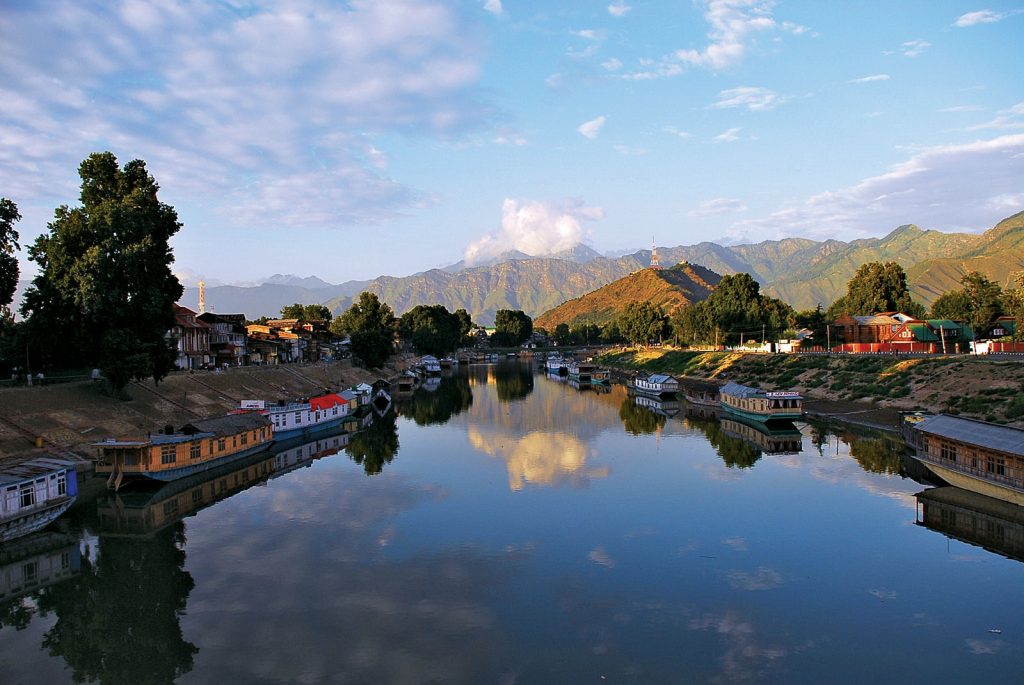
Srinagar- After the devastating floods that struck Kashmir in September 2014, a comprehensive flood management initiative was launched to bolster the River Jhelum and its spill channels. Spearheaded by the Central Water Commission (CWC) and backed by significant financial investment, the efforts have resulted in much increase in the river’s carrying capacities at key points.
According to an RTI request filed by M M Shuja with the Chief Engineer’s office, Irrigation & Flood Control Department Kashmir, the capacity from Sangam to Padhshahibagh has risen from 31,800 to 41,000 cusecs.
The improvement is part of a broader strategy to implement Phase I and Phase II of the short-term measures proposed by a three-member group led by the Chairman of the CWC, formed by the Prime Minister of India in September 2014.
The RTI response detailed the measures taken post-floods.
Following the floods, the Prime Minister of India directed the formation of a three-member group led by the Chairman of the Central Water Commission on September 18, 2014. The group proposed immediate, short-term, and long-term measures to address the situation.
The RTI revealed that the department swiftly plugged all breaches and restored numerous sites under Temporary and Permanent Restoration projects, costing Rs 163.11 crore and Rs 96.78 crore, respectively.
These actions were part of a broader strategy to implement Phase I and Phase II of the short-term measures.
Until long-term flood mitigation strategies were developed and approved, a Priority Flood Management Project was initiated to address urgent needs. This project’s main objective was to remove significant bottlenecks in the River Jhelum and its flood spill channels, providing immediate relief from low to moderate-magnitude floods. The Central Water Commission approved a detailed project costing Rs. 399.29 Crore, titled “Priority works—Comprehensive Plan for Flood Management Works on Jhelum—Phase-I,” in 2015-16. This project, funded under the FMBAP, is nearly complete.
As a result of Phase-I, the carrying capacity of the River Jhelum and its spill channels has increased significantly. The capacity from Sangam to Padhshahibagh has grown from 31,800 to 41,000 cusecs, while at Ram Munshibagh, it has increased from 27,000 to 32,000 cusecs. Additionally, the offtake at Padhshahibagh has expanded from 4,000 to 27,000 cusecs. In Wullar Baramulla, the outlet at Ningli has seen its capacity rise from 20,000 to 22,700 cusecs, and at Sopore, it has increased from 31,000 to 35,000 cusecs.
These enhancements reflect a significant improvement in the region’s flood management capabilities, providing better protection against future flooding events.
Follow this link to join our WhatsApp group: Join Now
Be Part of Quality Journalism |
Quality journalism takes a lot of time, money and hard work to produce and despite all the hardships we still do it. Our reporters and editors are working overtime in Kashmir and beyond to cover what you care about, break big stories, and expose injustices that can change lives. Today more people are reading Kashmir Observer than ever, but only a handful are paying while advertising revenues are falling fast. |
| ACT NOW |
| MONTHLY | Rs 100 | |
| YEARLY | Rs 1000 | |
| LIFETIME | Rs 10000 | |











